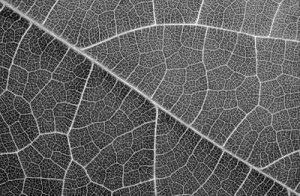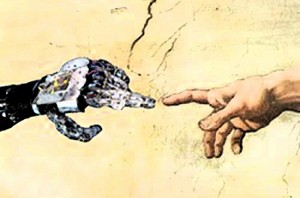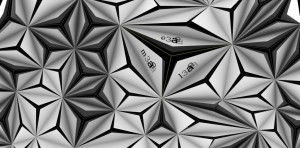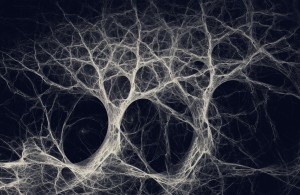IC3. T5
Digital Logics – T6 – Parametricism – A new Global Style for Architecture and Urban Design
Architecture has always been adapting to the needs of societies and its social demands of living. With the technological advancement of architecture in the last century, it has gone through many short lived episodes such as Postmodernism, Deconstructivism and Minimalism. Le Corbusier believed that architecture through the use “the straight line and right angle allows man to conquer nature”, stating that; “the curve is ruinous, difficult and dangerous”. However evolving from the previous Avant-grade styles and entering the new digital age, technology allows us to generate, mimic and understand the “chaotic” order of nature through the use of digital tools such as design systems, scripting techniques simulation and form-finding tools.
Parametricism – A new Global Style for Architecture and Urban Design, written by Patrik Schumacher, the leading pioneer behind the development of parametrics, describes how architects can redesign urbanism through the use of these parametric design techniques. With the continuous complexity and new needs of a post-fordist society in urban space, parametrics is a new and widely used systematic design to understand complex form finding through a variations of morphologies. Optimising the urban layout while simultaneously allowing for mass customisation.
Parametrics allows for visual understanding of how a single element can affect the overall system of the design itself, whether this is on a small interior scale or the layout of an urban society. This is generated through complex models and lawful material computation. Schumacher believes that to continue Parametricism as the innovative way to design architecture, is by exploring and evolving its complexities and understanding. He explains by developing the sub-systems, deep Relationality (interior and exterior relations), Parametric Figuration, Accentuation and responsiveness allows for a highly developed system that will bring us into a new Avant-garde style architecture for the digital age.
In this new digital age of architecture, parametrics will undeniably become the next advanced and exciting way of generating designs both in an architecture and in urban scale. With the continuous and rapid advancement of technology only time can tell where Parametricism will lead us in the near future. However, I believe that Parametrics is not the “dominant, single-style for avant-garde practice today” as Schumacher states. But another aesthetical architectural form, generated by the help of modern technology in our digital age. Off course if Parametricism continues to develop, it can become a major style in multiple factions of design, but architecture is ever evolving and another “avant-garde style” can take its place in the near future.
The emerging idea of mass production in a post-fordist society where design in architecture allows for mass customisation, is an intriguing and exciting idea that I personally find very interesting. Everything must be designed for the general population, however architecturally each individual person wants their own customisation for both interior and exterior design of their home. The concept of Parametricism; general design with mass customisation is of great interest to me and I can see myself continuing to develop that concept in the near future.
Image source: http://610f13.files.wordpress.com/2013/10/thepatternsofnatureseries2.jpg
Digital Logics- T5
Towards a Theory of Architecture Machine:
Author: Nicholas Negroponte (March 1969)
The author describes machine in which he calls the “Architecture Machine” that can learn about architecture and possibly learn about learning about architecture. A machine that can associate courses with goals, to be self-improving evolutionary specie and to be ethical. Nicholas also outlines the rational in the partnership “dialogue” of an architect in which he calls the “teacher” with the machine.
Nicholas describes the computer-aided design studies in the 1960’s as irrelevant in as much as they only present more fashionable and faster (though rarely cheaper) ways of doing what designers already do. His description of the machine and his writing apparently came after analyzing how computer aided design did not reflect effectively on the construction sector, thus a better system or a machine should be present, to aid designers and architects to bring their ideas to life with less hassle, hence boosting the productivity of the designer, without compromising his creativity. Devices that can intelligently respond to the tiny, individual, constantly changing bits of information that reflect the identity of each urbanite as well as the coherence of the city.
The learning machine:
A robot constructed with regenerative loops of a certain formal character is capable of deducting any legitimate conclusion from a finite set of premises. One approach to such a faculty is to increase the probability of meaningfulness of the design, generated from random or disorderly criteria.
Five subassemblies form the architectural machine:
1) A Heuristic Mechanism
A heuristic is a method or strategies based on rule of thumb which basically limit the search for a solution for upcoming architecture problems. The benefit is in time and in the reduction of search for alternatives. Heuristic learning is particularly relevant to evolutionary machines, since it lends itself to personalization and change via talking to one specific designer or overviewing many designers. In architecture machine, this heuristic element would probably be void of specific commitment when the package arrived at your office. Through architect- sponsored maturation, a resident mechanism would acquire broad rules to handle the exceptional information. The first time a problem is encountered, the machine would attempt to apply procedures relevant to apparently similar problems (or contexts). heuristics gained from analogous situations would be the machines first source of contribution to the solution of a new problem.
2) A Rote Apparatus
After repeated encounters, a rote apparatus would take charge. Rote learning is the elementary storing of an event or a basic part of an event and associating it with a response. When a sitatuin is repeatedly encountered, a rote mechanism can retain the circumstance for usage when similar situations are next encountered. In architecture, such repition of subproblems is extremely frequent: parking, elevators, plymbing, etc. Again, a rote mechanism lends itself to personalization. But, unlike the heuristic mechanism, this device would probably arrive originally with a small repertoire of situations it can readily handle.
3) A Conditioning Device
A conditioning mechanism is a device that handles all the non-exceptional information. Habits assist humans to surpass daily obstacles. In machine, beyond rote learning, design habits can respond to the standard events generated by the problem, by the heuristic mechanism or by the rote apparatus. Each robot would developed its own conditioned reflexes. The presence of habitual events will trigger predefined responses with little effort until the prediction fails; whereupon the response is faded out by evolution and is handles elsewhere in the system.
4) A Reward Selector
A reward selector initiates no activites. The reward mechanism selects from any action that which the “teacher” likes. The teacher (the designer, and overviewing apparatus, the inhabitants) must exhibit happiness or disappointment for the reward mechanism to operate. or to furnish this mechanism with direction, simulation techniques must evolve that implicitly (without the knowledge of the designer) test any environment. The design of this device is crucial; bad architecture could escalate as wasily as good design. A reward selector must not make a machine the minion or boot licker of bad design. It probably must evaluate, or at least observe, goals as well as results.
5) A Forgetting Convenience
“Unlearning is as important as learning”. Information can assume less significance over time and eventually disappear (exponential forgetting). Obsolescence occurs over time or through irrelevance . A technological innovation in the construction industry, for example, can make entire bodies of knowledge obsolete. Or past procedures might not satisfy environmental conditions that have changed over time, thus invalidating a heuristic, rote response, or conditioned reflex.
The Seeing Machine:
The seeing machine can respond to stimuli. Such a machine can “see, hear and sense” its surroundings by repetition and recognition.
Conclusion:
Whats interesting about this paper is that its way ahead of its time. I find it intriguing that the author can describe todays “architecture machines” in the clear way that he did. I can strongly relate the learning machine to Building Information Modeling software and hardware present currently in the construction industry. A machine that can adapt to fit the designers need. A self- improving machine that can be programmed to recognize errors, recall styles, respond to environmental factors, gather data from other designers etc. And can be moulded or custom made to act as the designer’s “partner”.
Digital logics /T6
A summary and critical analysis of the written text ‘Parametricism: A New Global Style for Architecture and Design’ by Patrick Schumacher.
DIGITAL LOGICS – T4
As it has been discussed through the last three decade’s avant-garde debates, there has been an increasing number of networks that we humans – and in a larger scale all the universe – are engaged with them, and engaged with the other parts of the universe by means of these networks.
Definitely, the number of networks that we may face everyday is increasingly faster that we suppose, But the point is how it happens? And Why? Is there any sample that could help us to predict the next steps of these fast transitions? Are most of us aware of what is taking place to us by means of these nets? To what extent?





